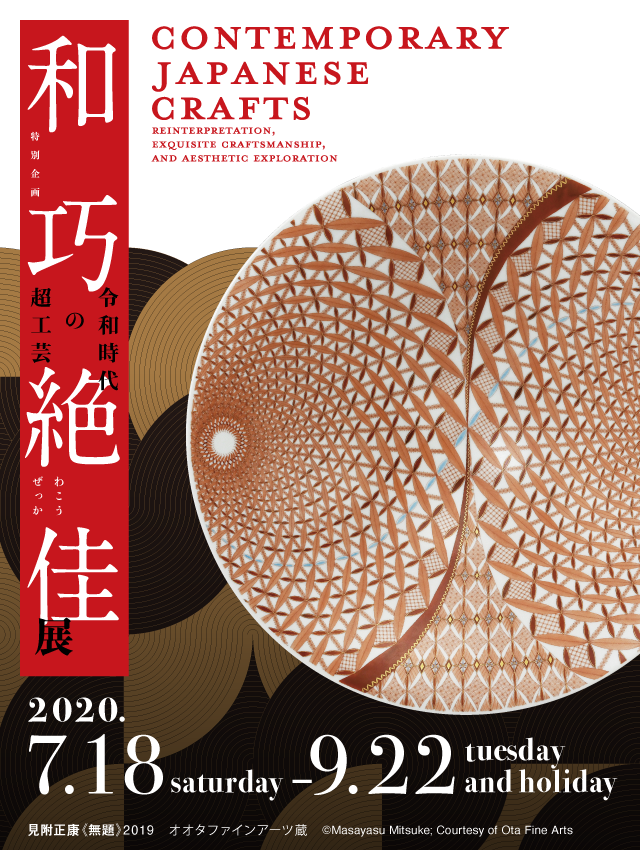Special Exhibition
Contemporary Japanese Crafts
Reinterpretation, Exquisite Craftsmanship, and Aesthetic Exploration


General Information
- Dates
- Jul. 18 - Sept. 22, 2020
- Hours
- 10 a.m. – 6 p.m. (Admittance until 5:30 p.m.)
* Open until 8 p.m. (Admittance until 7:30 p.m.) on Jul. 24, Jul. 31, Aug. 7, Aug. 28, and Sept. 4.
To prevent the spread of COVID-19 (Coronavirus Disease 2019), we will close the nighttime opening on Jul.24, Jul.31, Aug.7. and Aug.28.
【Notice】
We will limit the number of visitors in the exhibition room as measures to prevent the spread of COVID-19(Coronavirus Disease 2019). After reaching the limit, we will issue a numbered ticket and specify the admission time. Please note that you may not be able to enter if we issue all the numbered tickets on the same day.
- Closed
- Jul. 22, Aug. 12, Aug. 13, Aug. 14, Aug. 19, and Sept. 9
- Admission
- Adults: ¥1000
Visitors aged 65 or over carrying proof of age: ¥900
Students (College): ¥700
Students (High / Middle school): ¥500
Admission is free for children in primary school and younger. Groups of 20 or more will receive a ¥100 discount per person (not including those aged 65 or over).
Admission is free for disability passbook holders and up to one accompanying adult.
- Organizers
- Panasonic Shiodome Museum of Art, The Asahi Shimbun
- Support
- Minato City Board of Education
Exhibition overview
This exhibition introduces twelve remarkable contemporary artists—all born in the 1970s onwards—who produce craft works that are rooted in Japanese aesthetics. As we enter a global era in which art and products are increasingly homogenized, Japanese crafts are valued for their unique expression. The featured artists use different materials and techniques to expand the traditional idea of “craft,” pursuing the beauty and diverse possibilities of handmade goods by reimagining the relationship between person and object. The exquisitely crafted works on display embody the three major trends in contemporary Japanese craft arts : reinterpreting traditional Japanese cultural values, pushing the limits of what can be crafted by hand, and exploring the aesthetic potential of crafting materials. They suggest new trends in contemporary Japanese crafting and offer visitors an opportunity to ponder what the future holds for these ancient arts passed down through generations.





